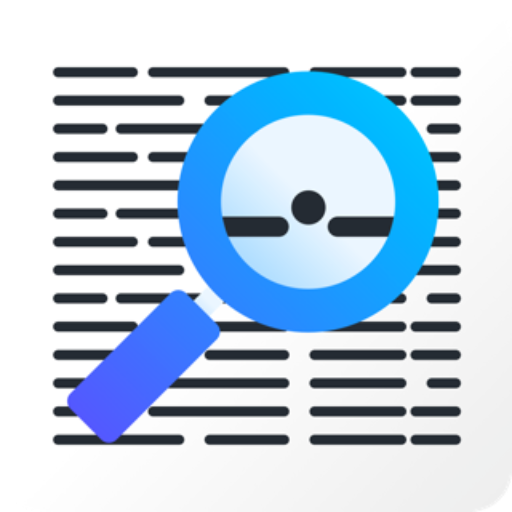FlowGPT-advanced network and graph flow analysis
AI-powered Graph Analysis for Complex Networks
Propagation Analysis over Graphs
Run default graph and flow
Related Tools

GPT Finder
Discover the best Custom GPT at OpenAI's GPT Finder

GPT Builder
User-friendly assistant for creating GPTs.

ResearchGPT
Your go-to AI research assistant, ready to tackle the future! Type "list all" to see all features.

CoolGPT

FastGPT ⚡
I'm FastGPT⚡Faster than any other GPT. Just like ChatGPT but without the waffle. Use "?" or "???" by itself for longer responses.

GPT Builder V2.4 (by GB)
Craft and refine GPTs. Join our Reddit community: https://www.reddit.com/r/GPTreview/
20.0 / 5 (200 votes)
Introduction to FlowGPT
FlowGPT is a highly specialized AI tool designed to assist in the analysis and simulation of graph-based networks, particularly focusing on flow dynamics within these networks. The tool is built to model and understand complex systems where interactions between nodes can be analyzed in terms of flow, such as in social networks, transportation systems, or the spread of information and diseases. FlowGPT leverages advanced algorithms and models, including various diffusion models, to simulate how entities (like information, diseases, or traffic) move through networks. It is intended for users who require detailed insights into network dynamics, allowing them to run simulations, tweak parameters, and analyze outcomes based on different configurations. For example, a researcher could use FlowGPT to simulate how a piece of information spreads through a social network, observing how different initial conditions or network structures impact the overall diffusion process.

Core Functions of FlowGPT
Graph Creation and Configuration
Example
Users can generate and configure various types of graphs, such as random graphs, scale-free networks, or small-world networks.
Scenario
A data scientist creating a simulation to understand the spread of a virus in different types of networks, adjusting parameters like graph size and connectivity to see how they impact the spread.
Diffusion Model Simulation
Example
FlowGPT supports several diffusion models like the SIR (Susceptible-Infectious-Recovered) model, allowing users to simulate how entities spread over time.
Scenario
Public health officials using the SIR model to simulate and predict the spread of a disease in a population, helping to inform containment and vaccination strategies.
Seed Node Selection and Impact Analysis
Example
The tool allows users to select seed nodes and analyze how their initial state influences the entire network's dynamics.
Scenario
Marketing analysts using seed nodes in a social network simulation to identify key influencers who can help maximize the spread of a new product or campaign.
Target Audience for FlowGPT
Data Scientists and Researchers
FlowGPT is ideal for professionals who need to model complex networks and simulate flows within them. These users benefit from FlowGPT's ability to handle large datasets, run various diffusion models, and provide detailed output that can be used in academic papers or research projects.
Public Health Officials and Epidemiologists
These users can leverage FlowGPT to simulate and predict the spread of diseases, enabling them to plan interventions more effectively. By tweaking model parameters, they can better understand how different factors influence the spread of infections, helping to inform public health strategies.

How to Use FlowGPT
Visit aichatonline.org for a free trial without login
Begin your journey with FlowGPT by visiting aichatonline.org. You can access a free trial without the need for an account or a ChatGPT Plus subscription.
Understand Your Graph Flow Requirements
Determine the type of network or graph you need to analyze. Whether it's social networks, epidemiology models, or traffic systems, knowing your specific requirements will guide your use of FlowGPT.
Select and Customize Your Graph Parameters
Choose the appropriate graph type, size, diffusion model, seed nodes, and step size according to your analysis needs. FlowGPT allows for detailed customization to fit various scenarios.
Run the Analysis
Execute your customized graph and flow analysis using FlowGPT’s powerful engine. Monitor the process and analyze the results, adjusting parameters if necessary for refined insights.
Review and Export Results
Once the analysis is complete, review the output carefully. FlowGPT provides options to export data for further use in reports, presentations, or further modeling.
Try other advanced and practical GPTs
Stable Diffusion Prompt Assistant
AI-Powered Prompts for Artistic Exploration

The Stoic Council
AI-powered Stoic wisdom for modern life

剁手 GPT
Smart shopping made simple with AI.

iTeachAI Multilingual Lesson Plan Creator
AI-powered, Multilingual Lesson Planning Made Simple

Anime Character Creator
AI-Powered Anime Character Design

AI算命
Unveil Your Destiny with AI算命

AI Lover
Nurture Love with AI-Driven Insight

Academic Paper Specialist
AI-Powered Academic Writing Enhancer

StoryBoard
AI-powered Storyboarding Made Simple

Jesus
AI-powered guidance for moral contemplation

DomainsGPT
AI-powered domain names, instantly available.

PromptGPT
Amplify Your AI Interactions

- Research
- Network Analysis
- Epidemiology
- Data Flow
- Graph Simulation
FlowGPT Q&A
What types of graphs can FlowGPT analyze?
FlowGPT can analyze various graph types, including social networks, epidemiological models, and transportation systems. It supports both directed and undirected graphs, allowing for a wide range of applications.
How does FlowGPT handle large-scale graphs?
FlowGPT is designed to efficiently manage and analyze large-scale graphs by optimizing memory usage and computation power, ensuring smooth performance even with extensive datasets.
Can I customize diffusion models in FlowGPT?
Yes, FlowGPT offers customization of diffusion models. Users can choose from standard models like SIR (Susceptible, Infected, Recovered) or input their custom models to fit specific research needs.
Is FlowGPT suitable for academic research?
Absolutely. FlowGPT is ideal for academic research, providing detailed analytical tools for studying complex networks, diffusion processes, and other dynamic systems, with support for publishing and exporting results.
What are the prerequisites for using FlowGPT?
No special prerequisites are required beyond basic knowledge of network graphs and diffusion models. However, familiarity with the specific domain you are studying will enhance the effectiveness of your analyses.